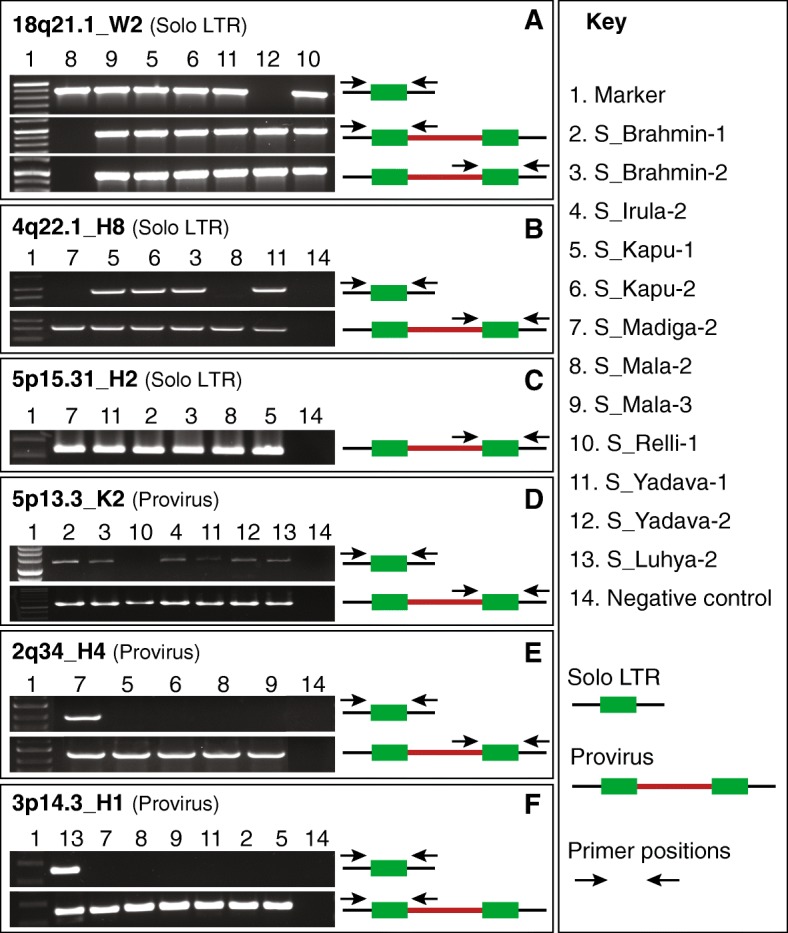Fig. 3.

Experimental validation of dimorphic HERV loci. Type of HERV allele in the reference assembly is shown within brackets after the name of the element. a PCR amplification of HERV-W solo LTR at the 18q21.1 locus in the human reference assembly. Primers were designed flanking the solo LTR. PCR amplification of the 18q21.1_W2 provirus with primers designed to the flank and internal gag sequence and with primers to the env sequence and flank. b PCR amplification of HERV-H solo LTR at the 4q22.1 locus in the reference assembly with primers flanking the solo LTR. PCR amplification of the 4q22.1_H8 provirus with primers designed to the internal env sequence and flank. c PCR amplification of HERV-H provirus at the 5p15.31 locus with primers designed to the internal env sequence and flank. The reference allele is solo LTR. d PCR amplification of HERV-K solo LTR at the 5p13.3 locus with primers flanking the solo LTR. PCR amplification of the the reference allele 5p13.3_K2 provirus with primers designed to the internal env sequence and flank. e PCR amplification of HERV-H solo LTR at 2q34 locus with primers flanking the solo LTR. PCR amplification of the reference provirus 2q34_H4 with primers designed to the internal env sequence and flank. f PCR amplification of HERV-H solo LTR at 3p14.3 locus with primers flanking the solo LTR. PCR amplification of the reference provirus 3p14.3_H1 with primers designed to the internal gag sequence and flank. The DNA samples of various South Asian populations and an African individual used for validation are listed in the key. LTRs are in shown as green boxes, the internal region as a red line, the flanking region as a black line. The primer positions are shown as black arrows
